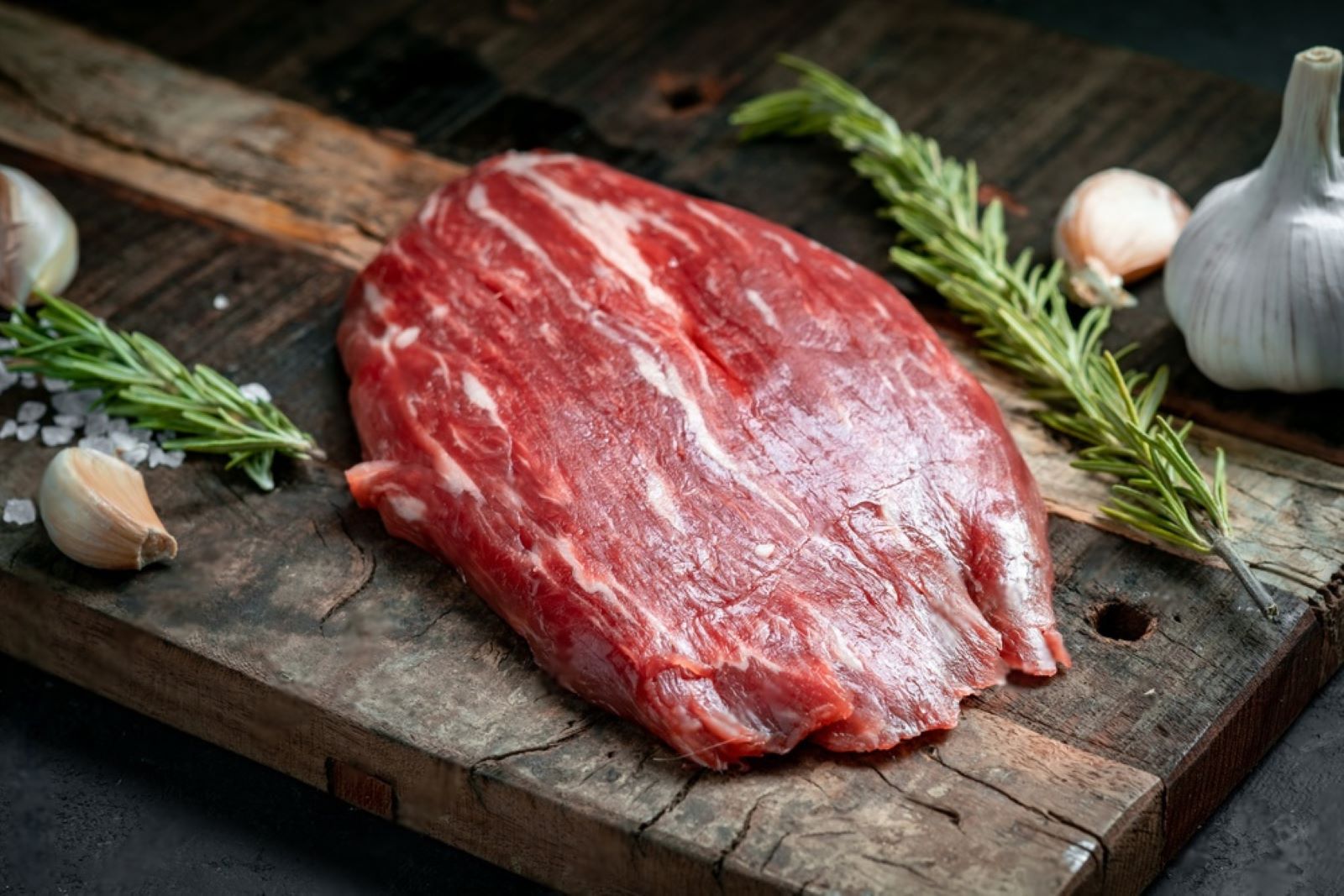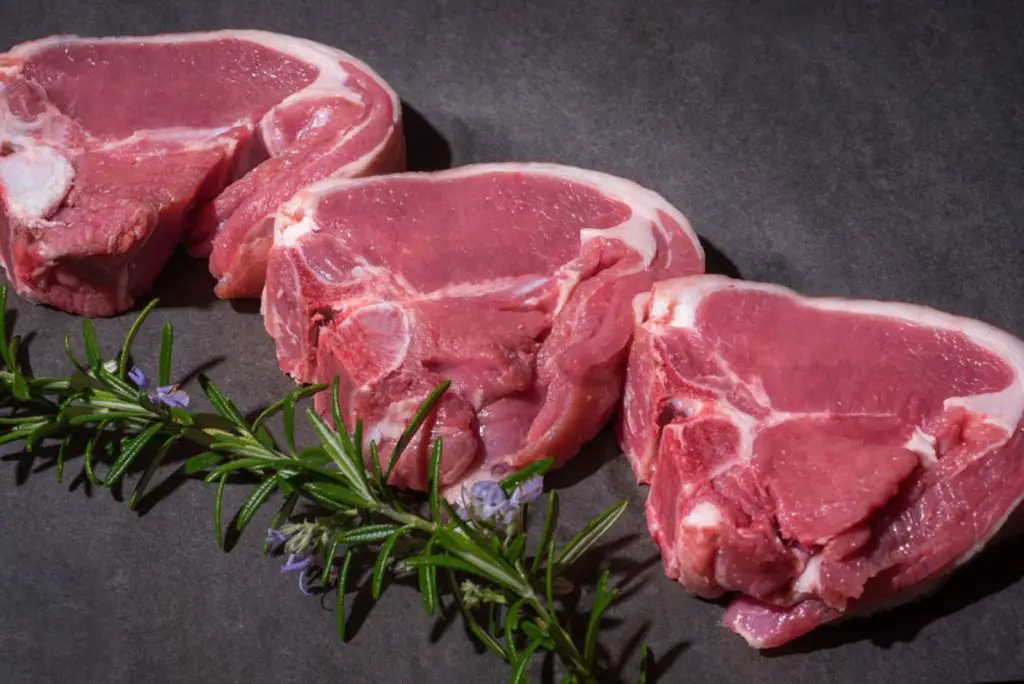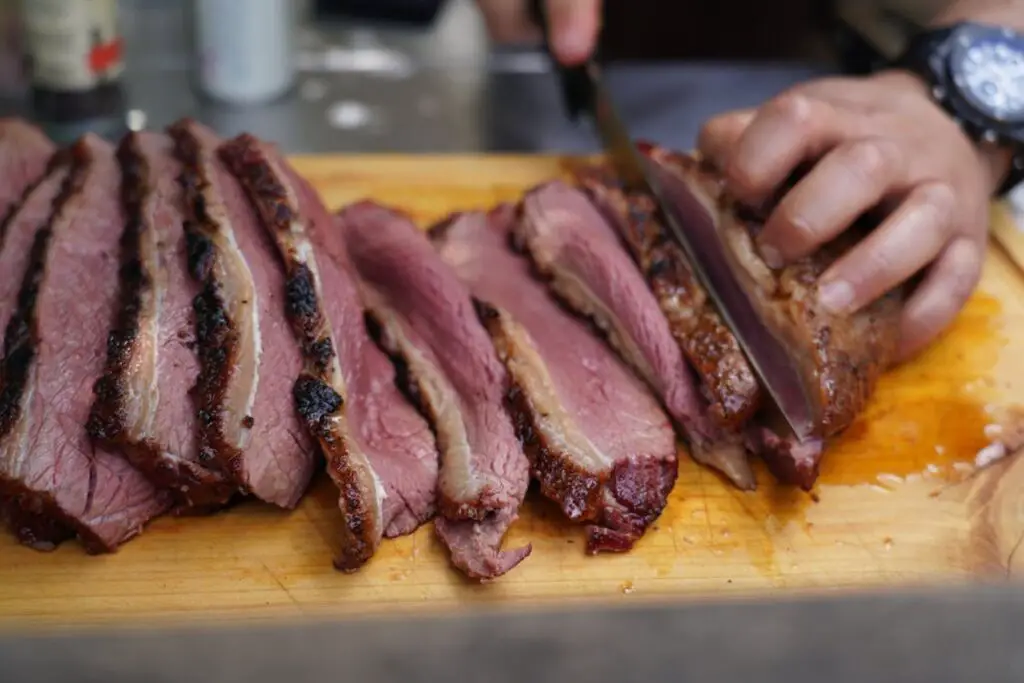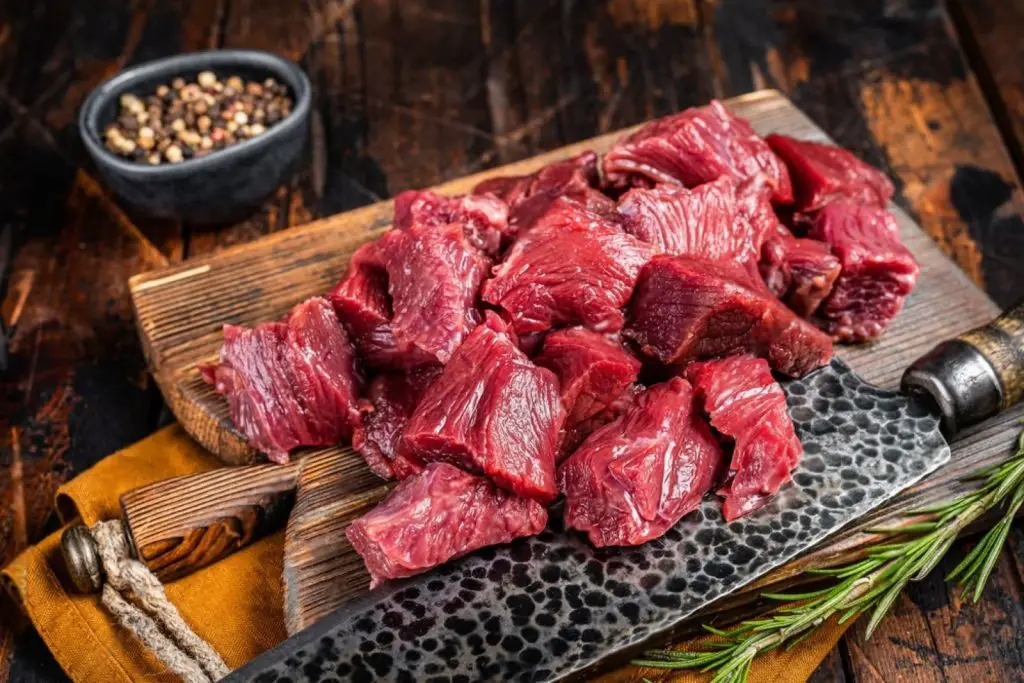
Flank steak, a flavorful and versatile cut of beef, is cherished for its rich taste and tender texture. This lean and juicy steak is a favorite for grilling, marinating, or using in various dishes like fajitas or stir-fries. If you find yourself with extra flank steak or want to prepare it in advance for future meals, freezing is an excellent option. Freezing flank steak allows you to extend its shelf life while maintaining its quality and taste. In this guide, we will explore the best practices for freezing flank steak, including proper preparation, packaging, and storage techniques, so you can have a stash of this delicious cut ready to be cooked and enjoyed whenever the craving strikes. Join us as we uncover the secrets of freezing flank steak and embrace the convenience of having a versatile and flavorful protein on hand, elevating your culinary creations to new heights.
Here are the simple steps to freeze flank steak:
Step 1: Select Fresh Flank Steak
Selecting fresh flank steak is crucial to ensure the best quality and flavor after freezing. When choosing flank steak for freezing, it’s important to opt for cuts that are fresh and haven’t exceeded their expiration date. Here’s why:
- Quality assurance: Fresh flank steak will have better taste, texture, and overall quality when compared to meat that is past its prime. Freezing can’t improve the quality of meat, so starting with fresh flank steak is essential for optimal results.
- Appearance: Look for flank steak with a bright red color. This indicates that the meat is fresh and hasn’t started to deteriorate. Avoid cuts that appear brown or have discolored spots, as these can be signs of spoilage.
- Odor check: Fresh flank steak should have a neutral or slightly meaty odor. Avoid cuts that have a strong, unpleasant smell, as it could be an indication of spoilage.
- Expiration date: Pay attention to the expiration date or “use by” date on the packaging. Select flank steak that is well within its recommended date to ensure it hasn’t been sitting on the shelf for too long.
By choosing fresh flank steak that meets these criteria, you are setting the foundation for a successful freezing process. It will help maintain the quality and flavor of the meat, ensuring a delicious meal even after it has been stored in the freezer.
Step 2: Wrap and Label Individual Steaks
Dividing the flank steak into suitable portions and properly packaging them is an essential step in freezing flank steak. Here’s why it’s important and how to do it effectively:
- Portion control: Before freezing, divide the flank steak into portions that align with your future needs. This allows you to defrost only the amount you require for a particular meal, minimizing waste and ensuring convenience.
- Packaging options: There are two common methods for packaging individual steaks: using plastic wrap or freezer bags. Both methods have their advantages, so choose the one that suits your preferences.
- Plastic wrap: Wrap each steak tightly in several layers of plastic wrap, ensuring all sides are well covered. This helps protect the meat from freezer burn and prevents air exposure.
- Freezer bags: Alternatively, you can place each steak in individual freezer bags. Remove as much air as possible from the bag before sealing it tightly. This creates a vacuum-like environment that helps preserve the quality of the meat.
- Air removal: Regardless of the packaging method you choose, removing excess air is crucial to prevent freezer burn. Freezer burn occurs when moisture evaporates from the meat and is replaced by dry, cold air, causing dehydration and flavor loss. By removing air from the packaging, you create a barrier that helps maintain the steak’s texture and taste.
- Labeling: Once the steaks are wrapped or placed in freezer bags, it’s important to label each package with the current date. This allows for easy reference later on and helps you keep track of the storage time. Use a marker or adhesive labels to clearly mark the date on each package.
By wrapping and labeling each individual steak, you ensure that they are adequately protected and organized in the freezer. This step not only helps maintain the quality of the flank steak but also makes it easier to retrieve specific portions when needed.
Step 3: Place in Airtight Containers
After wrapping the individual flank steak portions, placing them in airtight containers or freezer-safe bags provides an additional layer of protection against freezer burn. Here’s why this step is important and how to do it effectively:
- Preventing freezer burn: Freezer burn occurs when air comes into contact with the surface of the meat, causing moisture loss and leading to dry, discolored patches. By placing the wrapped flank steak portions in airtight containers, you create a barrier that helps prevent air exposure, reducing the risk of freezer burn.
- Maintaining moisture: Airtight containers help retain the natural moisture of the flank steak. Moisture loss can result in a loss of tenderness and juiciness, affecting the overall quality of the meat. The airtight seal minimizes moisture evaporation and helps preserve the steak’s texture and flavor.
- Avoiding cross-contamination: Airtight containers or freezer-safe bags provide a secure environment that prevents the spread of odors and flavors from other foods in the freezer. This helps maintain the integrity and taste of the flank steak without any unwanted cross-contamination.
- Proper sealing: Ensure that the containers or bags are tightly sealed to prevent air leakage. Check for any gaps or openings and adjust or reseal them as needed. This step is crucial in maintaining the desired conditions for freezing the flank steak.
- Choosing appropriate containers: Select containers or bags specifically designed for freezer use. These containers are typically made of durable materials that can withstand low temperatures without cracking or breaking. Avoid using containers that may become brittle or crack when exposed to freezing temperatures.
By placing the wrapped flank steak portions in airtight containers or freezer-safe bags, you enhance the protection against freezer burn and maintain the quality of the meat during storage. This step ensures that your flank steak remains flavorful, tender, and free from any unwanted odors or flavors.
Step 4: Store in the Freezer
Storing the wrapped flank steak portions in the freezer is the final step in the freezing process. Proper storage conditions are crucial to maintaining the quality and safety of the meat. Here’s why it’s important and how to do it effectively:
- Consistently low temperature: Locate a spot in your freezer where the temperature remains consistently low. Ideally, set the freezer temperature at or below 0°F (-18°C). This ensures that the flank steak remains frozen and prevents the growth of bacteria that can cause spoilage.
- Preservation of quality: Freezing the flank steak at a sufficiently low temperature helps preserve its flavor, texture, and nutritional value. It slows down the enzymatic reactions that can lead to quality degradation and helps maintain the steak’s overall freshness.
- Efficient airflow: Arrange the sealed containers or bags of flank steak in a way that allows for efficient airflow in the freezer. Proper air circulation helps maintain a stable temperature throughout the freezer and promotes even freezing. Avoid overcrowding the freezer with other items, as this can restrict airflow and result in uneven freezing.
- Easy access: Arrange the flank steak packages in a manner that allows for easy access. Place them in a designated area where you can easily retrieve the desired portions without disturbing the rest. This helps maintain the overall organization of your freezer and reduces the chances of accidentally thawing more steak than needed.
- Preventing temperature fluctuations: Avoid frequent opening and closing of the freezer door, as this can lead to temperature fluctuations that may compromise the quality of the flank steak. Minimize unnecessary exposure to warmer temperatures by retrieving the desired portions efficiently.
By storing the wrapped flank steak portions in a consistently low-temperature environment with efficient airflow, you ensure that the meat remains frozen, maintaining its quality and safety. Following these guidelines helps maximize the shelf life of the flank steak and ensures that it retains its flavor and texture when you’re ready to use it.
How long can flank steak last in the freezer?
Flank steak can last in the freezer for up to 3 months without a significant loss in quality. Beyond that time, the texture and flavor may begin to deteriorate, although the steak may still be safe to consume. Proper packaging, storage at 0°F (-18°C), and adhering to recommended storage times will help maintain the best quality of frozen flank steak.
Step 5: Keep Track of the Storage Time
Monitoring the storage time of your frozen flank steak is essential for maintaining its quality and ensuring it remains safe for consumption. Here’s why it’s important and how to keep track effectively:
- Quality maintenance: While frozen flank steak can be stored for an extended period, it’s best to consume it within a specific timeframe to maintain its optimal quality. Over time, the texture and flavor of the steak may gradually deteriorate, affecting the overall eating experience.
- Recommended storage time: Flank steak can typically be stored in the freezer for up to three months without a significant loss in quality. During this time, it remains safe to consume and should still retain acceptable taste and texture. However, it’s important to note that freezing can slightly affect the steak’s texture, so consuming it within this timeframe is ideal for the best eating experience.
- Proper labeling: Label each package of frozen flank steak with the date of freezing. This allows you to easily track the storage time and identify which packages should be used first. Use a marker or adhesive labels to clearly mark the date on each package.
- First-in, first-out (FIFO) approach: To ensure that you consume the oldest frozen flank steak first, organize your freezer based on the FIFO principle. Place the newly frozen packages at the back of the freezer and the older ones in the front. This way, you are more likely to use the flank steak within the recommended storage time.
- Sensory evaluation: If you’re unsure about the quality of the frozen flank steak after the recommended storage time, use your senses to assess it. Check for any noticeable changes in texture, color, or odor. If the steak appears significantly freezer-burned or has an off-putting smell, it’s best to discard it.
By keeping track of the storage time, you can ensure that you consume the frozen flank steak within its recommended period for the best taste and texture. Proper labeling and organization help you easily identify and use the packages in the correct order, minimizing any potential waste and ensuring a satisfying culinary experience.
Step 6: Thaw Frozen Flank Steak
Thawing frozen flank steak properly is crucial to maintain its texture, flavor, and overall quality. Here’s why it’s important and how to thaw it effectively:
- Slow and controlled thawing: Thawing the frozen flank steak slowly and in a controlled manner helps preserve its texture and flavor. Rapid thawing methods, such as using hot water or a microwave, can lead to uneven thawing and result in a less desirable final product.
- Refrigerator thawing: The best method for thawing frozen flank steak is to do it in the refrigerator. Place the wrapped portions in a shallow dish or on a plate to catch any potential drippings as the steak thaws. This prevents any cross-contamination with other foods in the refrigerator.
- Timing: Allow the flank steak to defrost in the refrigerator for an extended period, usually overnight or for about 24 hours. Thawing time may vary depending on the thickness of the steak and the temperature of your refrigerator. It’s important to plan ahead and give it enough time to thaw completely.
- Safe temperature: Thawing the flank steak in the refrigerator ensures that it remains at a safe temperature throughout the process. This helps prevent the growth of harmful bacteria that can occur when meat is thawed at room temperature.
- Even thawing: Thawing in the refrigerator allows for even and gradual thawing, which helps maintain the steak’s texture. This method ensures that the exterior and interior of the flank steak thaw at a similar rate, reducing the risk of uneven cooking later on.
By thawing the frozen flank steak slowly in the refrigerator, you ensure that it thaws evenly while maintaining its texture and flavor. This method promotes food safety and allows you to prepare the flank steak with consistent results. Remember to plan ahead and allocate enough time for the thawing process before cooking.
Other related questions
Can you refreeze flank steak?
Refreezing flank steak is generally not recommended. When meat is thawed and then refrozen, it can undergo changes in texture, quality, and safety. The process of freezing and thawing alters the cellular structure of the meat, and refreezing it can further degrade its overall quality. It’s best to consume or use thawed flank steak within a reasonable time to ensure the best taste and texture.
How do I know if the flank steak has gone bad after being frozen?
To determine if a frozen flank steak has gone bad, inspect its appearance for discoloration or freezer burn. Check for an unpleasant odor or slimy texture, which are signs of spoilage. If the steak exhibits any of these characteristics, it may no longer be safe to consume, and it is advisable to discard it to prevent potential foodborne illnesses.
Can I freeze flank steak with marinade or sauce?
Yes, you can freeze flank steak with marinade or sauce. Freezing flank steak with marinade or sauce can help enhance its flavor when thawed and reheated. To do so, marinate the flank steak in the desired marinade or sauce, making sure it is well coated. Allow the flavors to infuse for the recommended time before freezing.
Can I freeze flank steak with dry rub or spice blend?
Yes, you can freeze flank steak with a dry rub or spice blend. Dry rubs or spice blends can add delicious flavors to the flank steak when cooked. To freeze flank steak with a dry rub or spice blend, generously coat the steak with the desired seasoning, making sure it is evenly distributed. Allow the flavors to meld for a short time before freezing.
Can I freeze flank steak that has been tenderized?
Yes, you can freeze flank steak that has been tenderized. Tenderizing flank steak helps break down the muscle fibers, resulting in a more tender and flavorful meat. To freeze tenderized flank steak, ensure it is properly wrapped to prevent freezer burn. Place the tenderized steak in an airtight container or freezer bag, removing as much air as possible.








